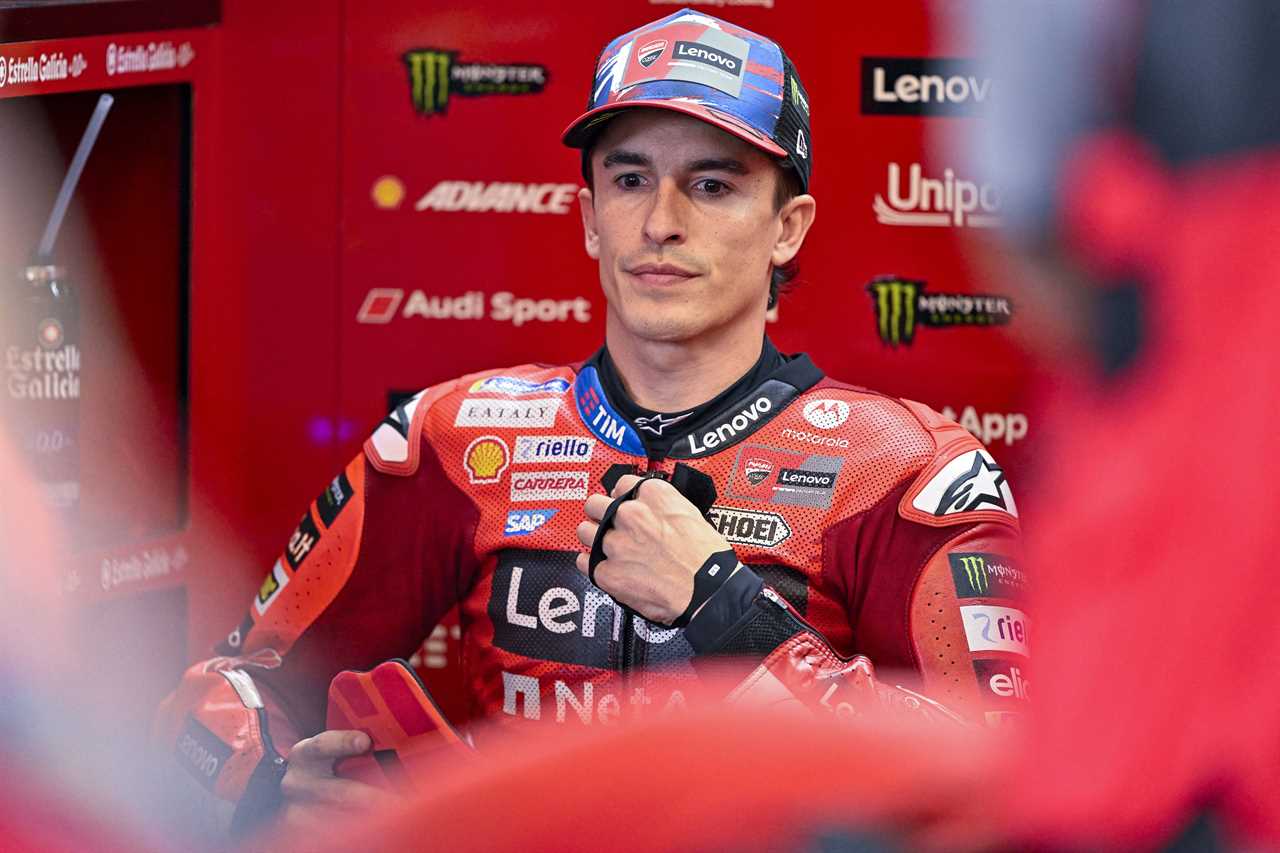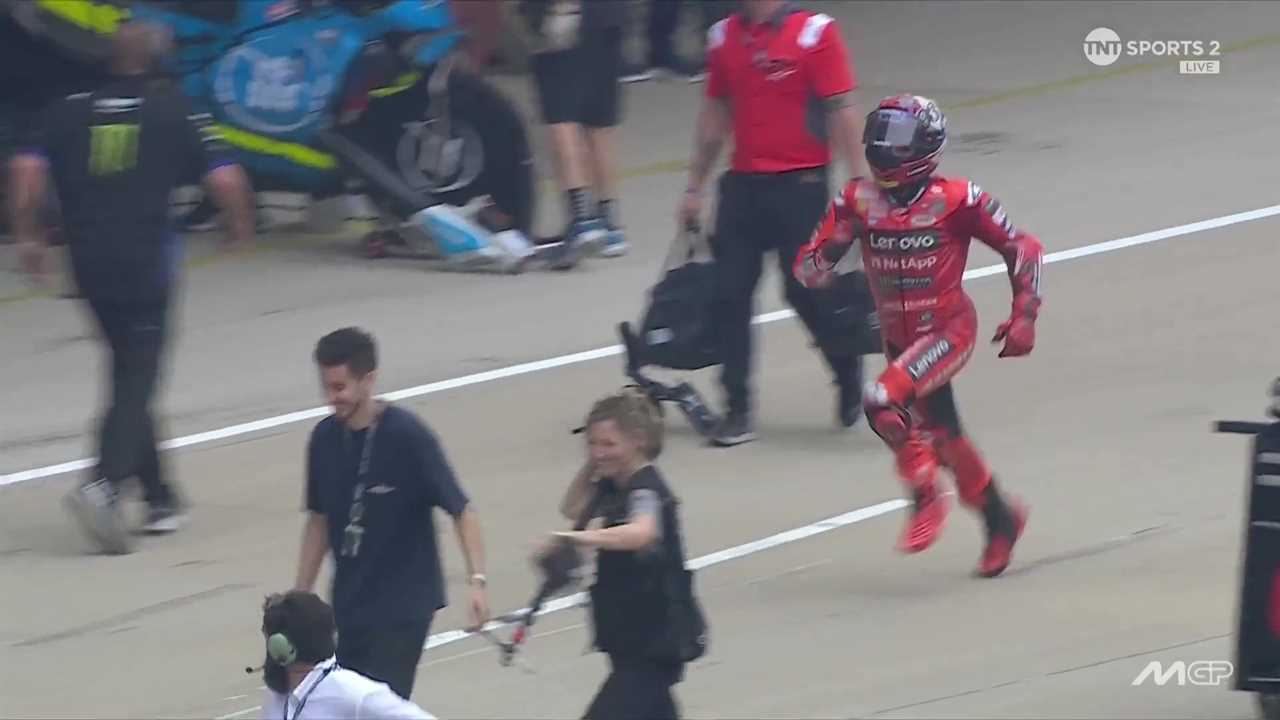
Unexpected Bike Swap Throws Grid into Turmoil
Sunday's MotoGP showdown at the Circuit of the Americas (COTA) was anything but ordinary, thanks to a surprising move by six-time champion Marc Marquez. Amidst damp conditions following recent rainfall, Marquez made a strategic decision that sent ripples through the grid even before the engines roared to life.
Strategic Shift Leaves Riders Scrambling
Initially stationed on a bike equipped with wet-weather tyres, Marquez abruptly exited his position and headed to the pitlane. There, he opted for a different machine fitted with slick tyres, signalling a potential shift in race strategy. This sudden change prompted several of his competitors to follow suit, with three others switching to slicks right from the start.
Rules Explored: Avoiding Penalties
Typically, such a bike change would attract penalties. However, the move by Marquez triggered a specific rule: if enough riders alter their setups, penalties are waived and a new starting procedure is implemented. Race director Mike Webb responded by delaying the start and reaffirming Marquez's position on pole, effectively nullifying any penalties.
Calculated Risk: Marquez's Masterstroke
In a post-race interview, Marquez revealed his actions were deliberate. "I really know the rules and how to push boundaries," he explained. "I predicted that leaving the grid would lead more than ten riders to follow, which would then delay the race start."

He further elaborated to TNT Sports, stating, "I saw that our wet strategy wasn't optimal and created a scenario where the race start would be delayed, benefiting my overall approach."
Rising Tensions: Lead and Loss
Marquez's bold gambit seemed to pay off initially. As the race progressed, he built up a commanding two-second lead, showcasing his dominance. However, the momentum was short-lived. On lap nine, disaster struck at Turn 4 when Marquez lost control on the inside kerb, resulting in a severe crash.
Impact on the Race and Championship
Despite rejoining the race on a damaged bike, Marquez was forced to retire on lap 13. This premature exit cleared the path for Ducati's Pecco Bagnaia, who seized the lead and ultimately claimed his first victory of the season. Bagnaia acknowledged that the win was partly due to Marquez's misfortune but expressed his delight at securing a win at COTA.
Marquez's crash had additional implications beyond the race itself. His brother, Alex Marquez, riding for Gresini, capitalised on the opportunity to take a one-point lead in the riders' championship standings.

Championship Stakes: Marquez Leads the Pack
At 28, Marc Marquez has consistently been a top contender, finishing as runner-up in all six races this season. With his latest performance, he now leads the championship standings for the first time in his premier-class career, setting the stage for a gripping competition as the season progresses.
Looking Ahead: Qatar Awaits
The MotoGP series continues with the next race scheduled in Qatar on April 13. As the championship heats up, all eyes will be on Marquez and his rivals to see how they navigate the challenges ahead and vie for the coveted title.
Frequently Asked Questions
Can Formula 1 cars refuel during a race?
Formula 1 is currently prohibited from refuelling mid-race. The rule has been in effect since 2010 for the purpose of improving safety and reducing costs. Cars must start a race with enough fuel for the entire distance. Teams must also balance the fuel weight against the speed and efficiency of the car.
How do weather conditions affect Formula 1 races?
Weather conditions can impact Formula 1 races in a big way, including tire choice, setup of the car, and strategies. Rain can cause slippery conditions on the track, forcing drivers to change to intermediate or wet tires. The teams must be ready to react quickly to changing circumstances, while drivers should show skill and caution. Similarly, temperature variations can affect engine performance and tire wear, all of which can alter the course of a race substantially.
How is the safety of Formula 1 drivers ensured?
Formula 1 cars have been designed with the latest safety features that protect drivers. This includes a strong, carbon-fiber monocoque as well as the Halo cockpit-protection system, energy absorbent crash structures, advanced helmet technology, and a powerful, lightweight monocoque. Each component is rigorously tested and adheres to stringent safety standards set by the FIA, ensuring that drivers are safeguarded against various types of impact.
What are the best Formula 1 teams?
Mercedes, Ferrari, Red Bull Racing, and others have historically been at the top of Formula 1 Racing. Mercedes has enjoyed sustained success in Formula 1, winning multiple constructors' titles, while Ferrari, which has a rich heritage in the sport, is a perennial contender. Red Bull Racing, with its aggressive innovation and competitive drive, has also cemented itself alongside these giants as a top team.
What is the meaning of the Monaco Grand Prix?
Monaco Grand Prix, a motor race that is celebrated for its glamour and for the challenge it poses to drivers, is one of the world's most prestigious races. Monte Carlo is a technical circuit with narrow, winding streets. There's no room for errors and the average speed is lower than on other tracks. Monaco's rich heritage and its tight turns and barriers make it a legendary track in Formula One.
What is the role a Formula 1 Race Engineer?
A Formula 1 race engineer is pivotal in managing various aspects of the car and driver performance throughout a race weekend. They are in constant communication with the driver, providing critical information and strategy updates, while also liaising with the team back in the pits to make real-time decisions. The race engineer makes crucial calls on tire changes, car adjustments, and race tactics, all aimed at securing the best possible outcome for the team.
Statistics
- As of the end of the 2022 season, Formula 1 races have been held in 34 different countries around the world.
- Ayrton Senna holds the record for most consecutive pole positions, achieving a series of eight poles from the 1988 Spanish Grand Prix to the 1989 United States Grand Prix.
- Ferrari is the most successful team in Formula 1 history, with 16 Constructors' Championships to their name.
- Kimi Räikkönen holds the record for the fastest lap in Formula 1 history, set at the Italian Grand Prix in 2018 with an average speed of 263.587 km/h (163.785 mph).
- The Monaco Grand Prix is the shortest race on the Formula 1 calendar, with a total race distance of only 260.286 kilometers.
- Michael Schumacher holds the record for the most World Championships won by a single driver, with a total of seven titles.
- The fastest lap ever recorded in Formula 1 was set by Juan Pablo Montoya, reaching a top speed of 372.6 km/h (231.523 mph).
- Jenson Button accomplished the greatest number of overtakes in a single race, with a total of 26 during the 2011 Canadian Grand Prix.
External Links
How To
Formula 1 Aerodynamics: What You Need to Know
Understanding aerodynamics and Formula 1 cars is essential. Aerodynamics in F1 involves controlling airflow, minimising resistance, and maximizing downforce to stick the car to track. This allows for faster cornering. For a better understanding of the fundamentals, you should focus on the influence of components like the bargeboards and underfloor as well as the rear wing. Learn about the regulations that govern car design. Then, keep up with technical discussions in motorsports-specific platforms. Experts will be discussing the latest developments in F1 aerodynamics.
 CricketBoxingFormula 1GolfHorse RacingPremier LeagueTennisPrivacy PolicyTerms And Conditions
CricketBoxingFormula 1GolfHorse RacingPremier LeagueTennisPrivacy PolicyTerms And Conditions
